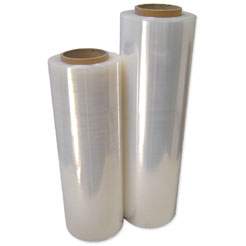
Last time, we considered the loading docks at your distribution center or warehouse, and how a few simple changes can make a world of difference in personnel safety. Now let’s continue with more tips for improving safety at the docks!
One kind of potential hazard at any loading dock is when a pallet gets damaged or breaks while being moved. A way to reduce the danger associated with a load of materials shifting or falling because of a broken pallet is to create and adopt a system to check pallets. Workers might inspect pallets either before or after a certain number of uses. And if a pallet has a noticeable defect but is already loaded with goods, make sure the workers at the loading dock know to have the products moved to a safe pallet. These steps not only make good sense for employee and bystander safety, but they can reduce incidents of damaged goods and equipment.
Your warehouse or distribution center can use plastic or metal banding to fasten products securely to the pallets for storage or transportation. Likewise, shrink wrap is useful for securing loose products … and be sure that items small enough to fall through a forklift’s overhead guard are secured. These precautions ensure that your forklift operator doesn’t get injured by something as common as a falling can of corn!
Trash or unnecessary items on the ground can build up over the course of a workday, especially if you have a 24-hour facility. Make it a policy at the loading dock that the area must be cleaned periodically to remove any debris or trash that could trip up workers or get jammed into machinery. Again, this simple concept protects your bottom line against expensive repairs while simultaneously protecting workers from accidents.
Inspect the loading dock (daily if possible) and make sure that emergency equipment items – such as fire extinguishers, chemical spill kits, eyewash stations, AED machines and first aid kits – are undamaged and that nothing is blocking access to them. It might be an operator’s simple mistake to park a lift truck in front of the fire extinguisher case, but don’t let that mistake cost a life.
Another safety concern is lighting, especially if your loading dock is exterior and operates at night. Make sure the dock area, as well as exit doors, stairs and handrails are properly illuminated, and that you or your maintenance supervisor keeps the bulbs operational. Also, your company may want to purchase dock lights to make the interior of trailers easier navigate, and safer, during loading and unloading work.
